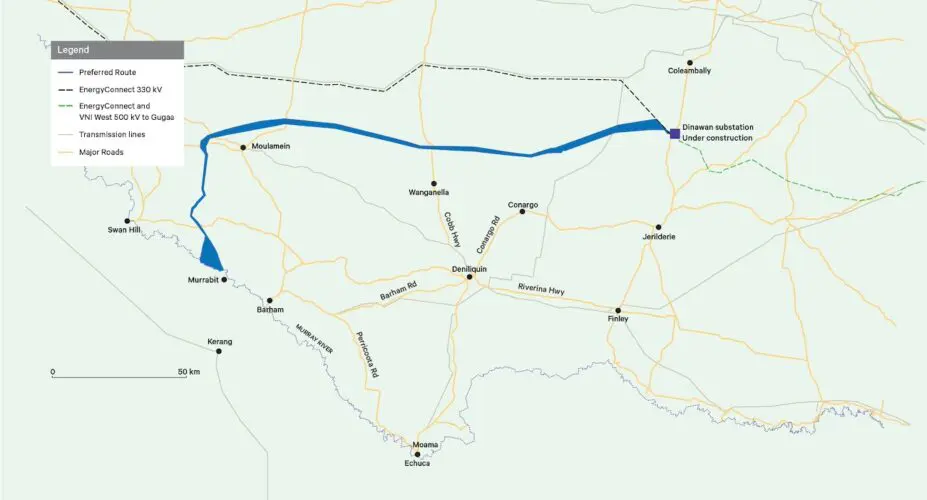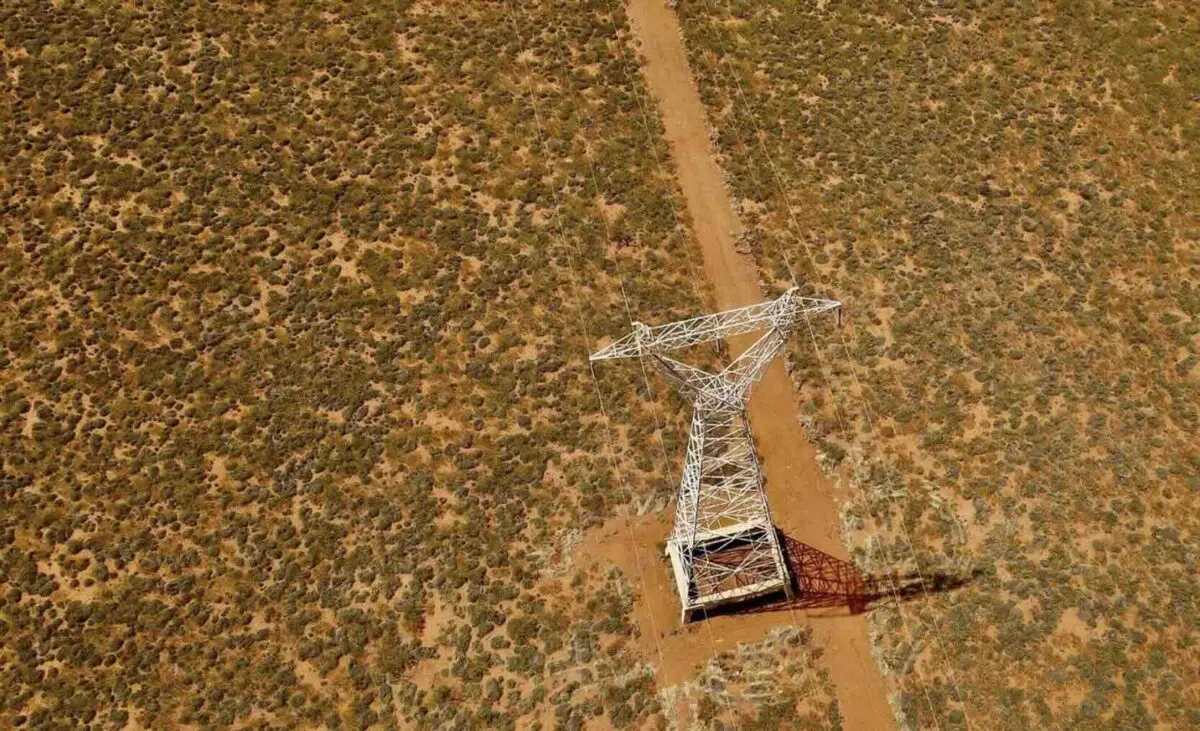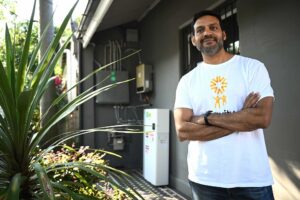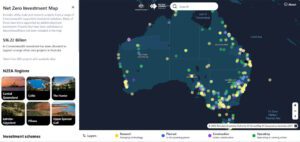The VNI West project is flush with almost $1 billion in cash to start early works, as Transgrid and government funders look to get the controversial transmission line underway.
Transgrid’s backers are kicking in $700 million to start environmental and other early work on the 235km New South Wales (NSW) section of the Victoria to NSW Interconnector West, or VNI West line.
The network company has so far secured land access deals for initial work for 77 per cent of the NSW side of the route, after changing it in March to avoid a nearby town.
The Clean Energy Finance Corporation (CEFC) has stumped up $140 million in concessional financing support, under the federal Rewiring the Nation program.
The Australian Energy Regulator (AER) approved stage one capital spending of $948.8 million in May, down 13.5 per cent on the $1.0963 billion asked for by Transgrid.
It does mean the company has a $108 million gap between the capital it’s raised for the project to date and the ceiling set by the AER.

VNI West is a second transmission link between the two states that’s designed to open up the region for more renewable energy, as well as improve reliability of the electricity supply.
The Victorian side of the project is being managed by Transmission Company Victoria (TCV), after the state took over transmission planning from the Australian Energy Market Operator late in 2023 to ensure it can reach its 95 per cent renewables target.
The high voltage, 500 kilovolt (kV), double-circuit overhead transmission line will connect the Western Renewables Link project (at Bulgana, Victoria) with EnergyConnect (at the Dinawan substation, north of Jerilderie) via a new substation near Kerang.
The full cost of the project is expected to be just under $4 billion, divided equally between the NSW and Victoria sides of the project. Early works are supposed to be finished by 2026.
“VNI West is essential to the delivery of Australia’s energy transition, meeting the Commonwealth and NSW governments’ net zero targets and providing consumers with access to cheaper renewable energy,” said Transgrid CEO Brett Redman.
“The project is forecast to deliver around $1.4 billion in net market benefits. It will also make it easier to share electricity between NSW and Victoria, improving reliability and security of supply in both states.
“Importantly for regional Australia, this project will generate more than 1000 jobs and provide millions of dollars worth of community investment and benefits.”
The $840 million of financing will allow the network company to buy long-lead time equipment such as transformers, reactors, conductors and steel, start designing substations and transmission lines and look for contractors, and work on community engagement.
The project has been riven with social licence problems in both states, as energised residents along its various proposed routes have opposed the prospect of a large scale transmission line.
In response to a draft report earlier this year that outlined four options, Transgrid said in March that in addition to “verbal feedback,” it received 48 written submissions, with 46 per cent coming from landowners within the corridor, 35% from the local community, 4% from industry and 15% “other.”
The majority – 79% – expressed their opposition to the project, while 13% were neutral and 8% expressed support.
Last year the AER knocked back a community group which opposed the route, and the project has been just as divisive amongst energy experts some of whom have taken starkly pro- or anti- positions.








